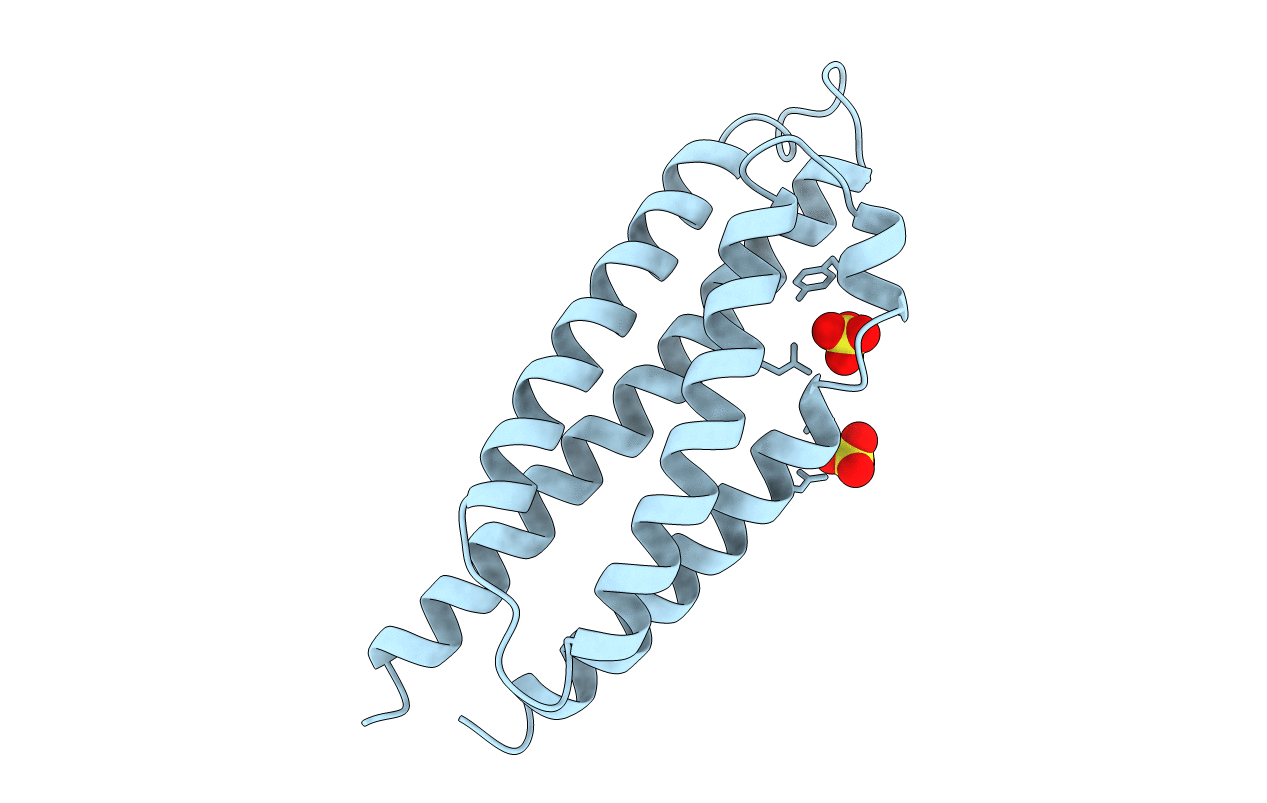
Deposition Date
1994-08-23
Release Date
1994-11-01
Last Version Date
2024-02-14
Entry Detail
PDB ID:
2ASR
Keywords:
Title:
THE THREE-DIMENSIONAL STRUCTURE OF THE ASPARTATE RECEPTOR FROM ESCHERICHIA COLI
Biological Source:
Source Organism:
Escherichia coli (Taxon ID: 562)
Method Details:
Experimental Method:
Resolution:
2.30 Å
R-Value Work:
0.20
R-Value Observed:
0.20
Space Group:
P 41 21 2


